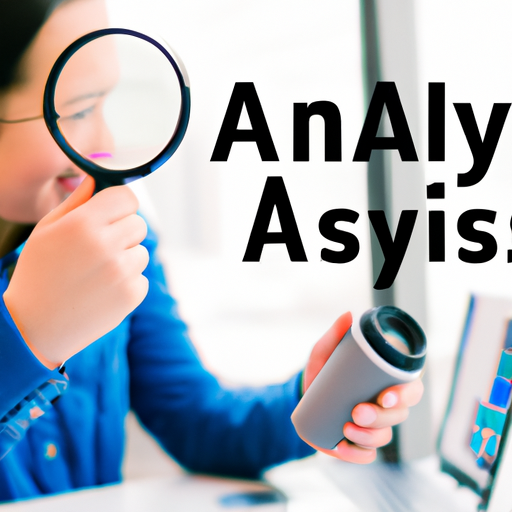How Can IT Services Assist With Sentiment Analysis?
If you’ve ever wondered how IT services can help businesses make sense of customer opinions, sentiment analysis might just be the key. By utilizing advanced technologies and algorithms, IT services can analyze the sentiments expressed in customers’ feedback, helping companies gain valuable insights into their audience’s thoughts and preferences. Whether it’s evaluating the sentiment of online reviews or monitoring social media conversations, IT services play a crucial role in understanding customer sentiment and enabling companies to make data-driven decisions that drive customer satisfaction and business growth.
Understanding Sentiment Analysis
What is sentiment analysis?
Sentiment analysis, also known as opinion mining, is the process of determining and interpreting the sentiment, emotion, or attitude expressed in a given piece of text. It involves analyzing the sentiment conveyed by words, phrases, or sentences to understand whether it is positive, negative, or neutral. By analyzing sentiment, businesses can gain valuable insights into customer opinions, brand reputation, and market trends.
Why is sentiment analysis important?
Sentiment analysis is crucial for businesses and organizations as it helps them understand and manage customer sentiment, optimize marketing strategies, enhance product development, and improve customer service. By analyzing sentiment, businesses can measure customer satisfaction, identify potential issues, and make data-driven decisions to boost customer loyalty and improve overall brand perception.
How does sentiment analysis work?
Sentiment analysis utilizes various computational techniques and algorithms to analyze and interpret the sentiment in a given text. It involves several stages, including data collection, preprocessing and cleaning, feature extraction, sentiment classification, and evaluation. During the preprocessing stage, the text data is cleaned and processed to remove noise, standardize formats, and handle missing values. Afterward, machine learning and artificial intelligence algorithms are employed to classify the sentiment and determine the overall sentiment score.
Role of IT Services in Sentiment Analysis
Integration of IT infrastructure
IT services play a vital role in integrating the necessary infrastructure for effective sentiment analysis. This involves selecting and deploying suitable IT tools and systems such as natural language processing libraries, machine learning frameworks, and database management systems. IT professionals work closely with data scientists and analysts to ensure seamless integration and efficient utilization of these technologies.
Data collection and storage
Data collection is a critical aspect of sentiment analysis. IT services assist in collecting data from various online sources such as social media platforms, news websites, customer reviews, and forums. They utilize web scraping techniques to gather relevant text data or work with APIs for data retrieval. Furthermore, IT services ensure that data is securely stored and organized in robust data storage solutions, enabling easy access and retrieval for sentiment analysis tasks.
Data preprocessing and cleaning
IT services play a significant role in preprocessing and cleaning the collected data before sentiment analysis. This includes removing noise from the text data, handling missing values, standardizing text formats, and removing irrelevant information. IT professionals work with data cleaning algorithms and tools that automatically perform these tasks, ensuring that the input data is accurate, consistent, and ready for sentiment analysis.
Machine learning and AI algorithms
IT services facilitate the implementation of machine learning and AI algorithms in sentiment analysis. They assist in training sentiment analysis models by providing suitable datasets and feature extraction techniques. IT professionals work with data scientists to implement supervised and unsupervised learning techniques, enabling sentiment classification and sentiment score calculation. They also actively participate in evaluating and fine-tuning these models to improve their accuracy and performance.
Integrating IT Infrastructure
Selection and deployment of suitable IT tools
When integrating IT infrastructure for sentiment analysis, IT services are responsible for carefully selecting and deploying the most suitable IT tools and technologies. This includes choosing appropriate natural language processing libraries, machine learning frameworks, and data storage solutions that align with the specific requirements of sentiment analysis tasks. The selection process involves considering factors such as scalability, performance, compatibility, and ease of integration with existing systems.
Planning and designing IT infrastructure
IT services focus on planning and designing an efficient IT infrastructure for sentiment analysis. This involves assessing the current resources and capabilities, defining the infrastructure architecture, and creating a roadmap for implementation. IT professionals collaborate with data scientists and business stakeholders to identify the specific requirements and design a scalable and sustainable infrastructure that can accommodate the growing demands of sentiment analysis.
Data Collection and Storage
Utilizing web scraping techniques
IT services employ web scraping techniques to collect relevant text data for sentiment analysis. Web scraping involves automatically extracting text data from websites, social media platforms, and other online sources. IT professionals use specialized tools or develop custom scrapers that crawl web pages, extract the required information, and store it in a structured format for further analysis. By efficiently scraping data, they ensure that a comprehensive and diverse range of data is available for sentiment analysis.
Working with APIs for data retrieval
IT services also work with application programming interfaces (APIs) to retrieve data from various sources such as social media platforms, news aggregators, and online review platforms. APIs provide a standardized way to access and retrieve data from external platforms, allowing IT professionals to utilize specific endpoints or methods to collect the required text data. By efficiently leveraging APIs, they ensure a seamless and automated data retrieval process for sentiment analysis.
Implementing robust data storage solutions
Once the data is collected, IT services are responsible for implementing robust data storage solutions. They ensure that the collected text data is stored securely and efficiently for further analysis. This involves designing and implementing databases or data lakes that can handle large volumes of text data. IT professionals consider factors such as data redundancy, backup and recovery, scalability, and data privacy regulations while implementing these storage solutions to facilitate easy access and retrieval of data for sentiment analysis tasks.
Data Preprocessing and Cleaning
Removing noise from data
Before performing sentiment analysis, IT services focus on removing noise from the collected text data. Noise refers to irrelevant or misleading information that may impact the accuracy of sentiment analysis results. IT professionals utilize various techniques such as regular expressions, filtering, and text cleaning algorithms to remove noise from the text data. By eliminating noise, they ensure that the sentiment analysis models are trained and evaluated on clean and relevant data.
Handling missing values
IT services also handle missing values in the collected text data. Missing values can occur due to various reasons, such as incomplete user-generated content or technical issues during data collection. IT professionals employ techniques like imputation, where missing values are estimated or replaced with appropriate values, ensuring that sentiment analysis models receive complete and reliable input data.
Standardizing text formats
To ensure consistency and comparability in sentiment analysis, IT services focus on standardizing text formats. This involves transforming and normalizing the text data to a common format by removing punctuation, converting to lowercase, and handling abbreviations or synonyms. IT professionals use text preprocessing techniques such as tokenization, stemming, and lemmatization to standardize the text, making it suitable for analysis using sentiment analysis algorithms.
Removing irrelevant information
In addition to removing noise, IT services also eliminate irrelevant information from the text data. Irrelevant information includes metadata, URLs, special characters, and other non-textual elements that do not contribute to sentiment analysis. IT professionals employ techniques such as regular expressions or rule-based filtering to identify and remove these elements, ensuring that sentiment analysis models focus solely on the textual content that conveys sentiment.
Machine Learning and AI Algorithms
Training sentiment analysis models
IT services play a crucial role in training sentiment analysis models. They provide the necessary datasets that contain labeled examples of text with corresponding sentiment labels. IT professionals work closely with data scientists to preprocess the data, extract relevant features, and train machine learning and AI algorithms on this data. By iteratively adjusting the parameters and architectures of these models, IT services ensure that they learn to accurately classify sentiment in unseen text data.
Implementing supervised and unsupervised learning techniques
IT services implement both supervised and unsupervised learning techniques in sentiment analysis. In supervised learning, sentiment analysis models are trained using labeled datasets, where each text sample is associated with a sentiment label. IT professionals utilize classification algorithms such as logistic regression, support vector machines, or deep learning architectures like recurrent neural networks (RNNs) and convolutional neural networks (CNNs) to implement supervised sentiment analysis.
In unsupervised learning, IT services rely on clustering algorithms or topic modeling techniques to identify underlying sentiment patterns in the data. They employ algorithms such as k-means clustering or Latent Dirichlet Allocation (LDA) to group similar text samples based on their sentiment or topic. By combining both supervised and unsupervised learning techniques, IT services ensure comprehensive sentiment analysis that captures both explicit and implicit sentiments expressed in the text.
Evaluating and fine-tuning models
IT services actively participate in evaluating and fine-tuning sentiment analysis models. They employ evaluation metrics such as accuracy, precision, recall, and F1-score to measure the performance of these models on test datasets. IT professionals analyze the model’s strengths and weaknesses, identify potential biases or limitations, and fine-tune the models accordingly. By continuously evaluating and refining these models, IT services improve their accuracy and reliability in capturing sentiment from text.
Real-Time Sentiment Monitoring
Setting up real-time data ingestion
IT services focus on setting up real-time data ingestion for continuous sentiment monitoring. Real-time data ingestion involves collecting and processing text data as it becomes available, enabling immediate analysis and response. IT professionals utilize technologies such as event-driven architecture, message queues, or stream processing platforms to ensure efficient ingestion of text data from various sources. By capturing real-time data, they facilitate timely sentiment analysis and monitoring of customer sentiments or market trends.
Implementing streaming analytics
IT services implement streaming analytics to analyze and process the real-time text data for sentiment monitoring. Streaming analytics involves continuously processing and analyzing data in motion, enabling real-time insights and alerts. IT professionals utilize technologies such as Apache Kafka, Apache Flink, or Apache Spark Streaming to implement streaming analytics pipelines that can handle large volumes of text data in real-time. By effectively utilizing streaming analytics, they ensure prompt detection and response to significant changes in sentiment.
Alerts and notifications for significant sentiment changes
IT services enable alerts and notifications for significant changes in sentiment. By using predefined thresholds or machine learning algorithms, IT professionals can automatically detect sudden shifts in sentiment and trigger alerts or notifications to relevant stakeholders. This allows businesses to promptly respond to emerging issues, capitalize on positive sentiment, or take preventive measures to maintain customer satisfaction. By facilitating real-time alerts, IT services play a critical role in enabling proactive sentiment management and ensuring timely decision-making.
Semantic Analysis and Natural Language Processing
Applying semantic analysis techniques
IT services apply semantic analysis techniques to understand the meaning and context of the text data. Semantic analysis goes beyond simple sentiment classification and focuses on capturing deeper aspects such as emotion, intent, or sarcasm in the text. IT professionals utilize techniques such as sentiment lexicons, word embeddings, or deep semantic parsing to extract semantic information from the text data. By incorporating semantic analysis, they enhance the accuracy and granularity of sentiment analysis, enabling a more comprehensive understanding of customer sentiments.
Utilizing natural language processing algorithms
IT services leverage natural language processing (NLP) algorithms to process and analyze text data. NLP encompasses a wide range of techniques such as part-of-speech tagging, syntactic parsing, named entity recognition, and sentiment analysis. IT professionals utilize NLP libraries and frameworks such as NLTK, SpaCy, or Stanford NLP to implement these algorithms effectively. By leveraging NLP, they extract linguistic features from the text data, enabling the sentiment analysis models to capture the nuances and complexities of human language.
Identifying sentiment indicators and context
IT services focus on identifying sentiment indicators and understanding the context in sentiment analysis. Sentiment indicators are words, phrases, or structures that convey sentiment, such as positive or negative adjectives, emoticons, or sentiment-specific patterns. IT professionals use rule-based or statistical methods to identify these indicators and assign sentiment scores accordingly. Additionally, they consider contextual information such as the topic, author, or temporal aspects to provide a more accurate and contextual understanding of sentiment. By incorporating sentiment indicators and context, IT services enhance the precision and relevance of sentiment analysis results.
Data Visualization and Reporting
Developing interactive dashboards
IT services are responsible for developing interactive dashboards for visualizing sentiment analysis results. Interactive dashboards provide an intuitive and user-friendly interface for exploring sentiment trends, sentiment distributions, and other relevant metrics. IT professionals utilize data visualization tools such as Tableau, Power BI, or D3.js to create interactive charts, graphs, and heatmaps. By combining sentiment analysis outputs with interactive dashboards, they enable businesses to gain actionable insights and make data-driven decisions based on sentiment trends.
Generating sentiment reports
In addition to interactive dashboards, IT services generate sentiment reports that summarize the sentiment analysis results. Sentiment reports provide a concise overview of sentiment trends, sentiment distribution across various topics or brands, and key findings from the sentiment analysis process. IT professionals employ reporting tools or leverage programming languages such as Python or R to generate automated sentiment reports. By providing sentiment reports, they enable stakeholders to quickly grasp the sentiment landscape and take appropriate actions to address sentiment-related challenges or opportunities.
Visualizing sentiment trends over time
IT services focus on visualizing sentiment trends over time to understand the temporal dynamics of sentiment. They employ time series analysis techniques to plot sentiment scores, sentiment distributions, or sentiment changes over a specified period. IT professionals utilize line charts, area charts, or heatmaps to visualize sentiment trends, enabling businesses to identify seasonal patterns, monitor the impact of specific events, or track the effectiveness of sentiment management strategies. By visualizing sentiment trends, they facilitate a deeper understanding of the evolving sentiment landscape and support informed decision-making.
Challenges and Future Directions
Dealing with subjectivity and sarcasm in sentiment analysis
One of the major challenges in sentiment analysis is dealing with subjectivity and sarcasm in text data. Subjectivity refers to the presence of personal opinions and experiences, making sentiment classification more complex. Sarcasm adds another layer of complexity as the underlying sentiment may be opposite to the literal meaning of the words. IT services are continuously exploring advanced natural language processing techniques, such as sentiment-specific language models or deep learning architectures, to effectively handle subjectivity and sarcasm in sentiment analysis.
Expanding sentiment analysis to multimedia data
Sentiment analysis has primarily focused on text data, but with the rise of multimedia content, there is a growing need to expand sentiment analysis to images, videos, and audio data. IT services are exploring techniques such as image recognition, video analysis, and speech sentiment analysis to extend sentiment analysis capabilities to multimedia data. By integrating these multimodal sentiment analysis techniques, businesses can gain a more comprehensive understanding of sentiment in various forms of digital content.
Advancements in sentiment analysis technology
The field of sentiment analysis is continuously evolving, and IT services are at the forefront of driving advancements in sentiment analysis technology. They are actively exploring new algorithms, models, and techniques to improve sentiment analysis accuracy, scalability, and real-time capabilities. IT professionals are investigating the applicability of deep learning architectures, transfer learning, or hybrid models that combine multiple sentiment analysis approaches. By embracing advancements in sentiment analysis technology, IT services enable businesses to stay agile, adapt to changing customer sentiments, and gain a competitive edge in the market.
In conclusion, IT services play a crucial role in sentiment analysis by integrating IT infrastructure, facilitating data collection and storage, ensuring data preprocessing and cleaning, implementing machine learning and AI algorithms, enabling real-time sentiment monitoring, applying semantic analysis and natural language processing techniques, visualizing sentiment analysis results, and addressing challenges while driving advancements in sentiment analysis technology. With the assistance of IT services, businesses can harness the power of sentiment analysis to understand their customers better, enhance brand perception, and make informed decisions based on customer sentiments.








